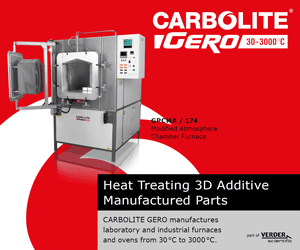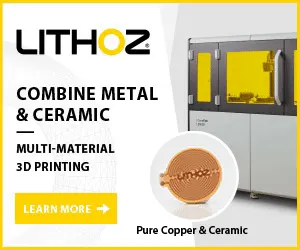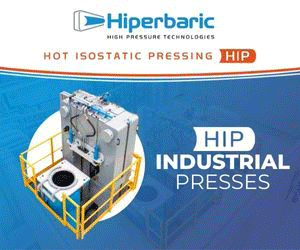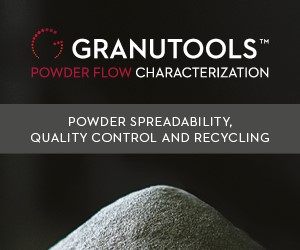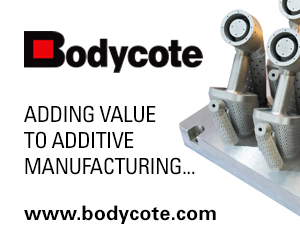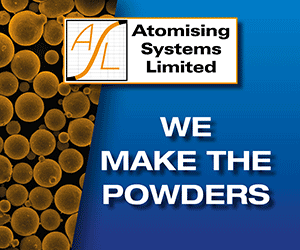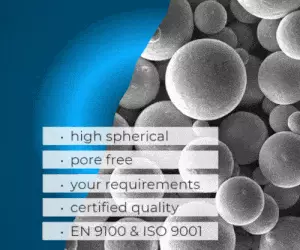Metal Additive Manufacturing, Vol. 5 No. 3 Autumn 2019
Prefer a PDF download? Click here
In addition to the latest industry news, this 196-page issue of Metal Additive Manufacturing magazine includes the following exclusive features:
Sintavia: New facility signals the move towards volume metal Additive Manufacturing for aerospace and defence
In May 2019, US-based Sintavia, LLC opened a state-of-the-art facility in Hollywood, Florida, dedicated to the volume production of metal additively manufactured components for the aerospace and defence sector, marking a significant expansion of the company’s production capacity.
Debbie Sniderman visited the new facility on behalf of Metal Additive Manufacturing magazine and reports on the company’s ambitious plans and its management’s views on the ongoing evolution of the industry.
View online | Download single page PDF | Download double page PDF
Thinking about metal Binder Jetting or FFF? Here is (almost) everything you need to know about sintering
With the arrival of high-volume metal Binder Jet systems and a growing interest in metal Fused Filament Fabrication, the AM industry is set for a new phase of growth. The ability to use this new generation of systems for the production of ‘green’ parts is, however, only half of the story.
The sintering of these parts to create large quantities of finished product to a consistent quality requires both an investment in furnaces that can cost in excess of $1 million each, and a thorough understanding of sintering.
In this article, Prof Randall German, the leading authority on the science of sintering, outlines the process and its core challenges.
View online | Download single page PDF | Download double page PDF
Metal Binder Jetting and FFF: Considerations when planning a debinding and sintering facility for volume production
A new generation of Binder Jetting machines now promises to deliver high volumes of parts at previously unimaginable speeds. Metal AM’s Nick Williams interviews Stefan Joens and the team at Elnik Systems LLC, a leading provider of industrial debinding and sintering furnaces, about the reality of entering this field and the technologies and equipment that are needed for the often underestimated processes of debinding and sintering.
View online | Download single page PDF | Download double page PDF
Velo3D: How a ‘support-free’ Laser Powder Bed Fusion process could remove roadblocks to serial Additive Manufacturing
With its Sapphire machine and Flow build preparation software capable of highly-controlled, virtually support-free Additive Manufacturing, Velo3D is pushing the limits of what is possible with Laser Powder Bed Fusion (L-PBF). Since launching its first machine in 2018, the California-based company has seen success with a range of highly complex parts which would challenge even the most experienced AM engineer.
In this article, Zach Murphree, Velo3D’s Vice President of Technical Partnerships, explains the key factors which set the company’s process apart from the wider AM market.
View online | Download single page PDF | Download double page PDF
New horizons for Additive Manufacturing in the oil, gas and maritime industries
The wide potential of Additive Manufacturing in the oil and gas and maritime sector has come to be widely accepted, with the technology offering significant advantages in terms of lead time, part weight, part count, higher levels of geometric complexity and new material properties. However, in these safety-critical industries, there remain some concerns regarding the quality of AM parts.
A Joint Industry Project (JIP), begun in January 2018 and consisting of twenty partners, aims to deliver a new JIP Guideline on Additive Manufacturing for this sector. Here, DNV-GL’s Harsharn Singh Tathgar and Berenschot’s Onno Ponfoort report on the guideline’s development.
View online | Download single page PDF | Download double page PDF
Redesigned for Additive Manufacturing: Serial production of a new fuel swirler for Siemens gas turbine
Whilst the principles of Design for Additive Manufacturing (DfAM) may suggest ‘clean-sheet’ components are the best way to reap the benefits of AM technology, many examples of redesigns have brought significant performance and economic benefits.
In this article, Ray Huff and Terry Wohlers report on further success at Siemens in the use of AM for gas turbine fuel swirlers, highlighting both the development process and the evolving role of digital data in manufacturing.
View online | Download single page PDF | Download double page PDF
Understanding metal powder requirements for Additive Manufacturing: Views from the industry
At the 2019 Additive Manufacturing Users Group (AMUG) Conference in Chicago, Illinois, a panel was held to discuss requirements for Additive Manufacturing systems. Despite the late hour of the panel and depth in the week at which it was held, a formidable crowd organised themselves to hear Ryan Dehoff of ORNL, Filip Francqui of Granutools and John Barnes of The Barnes Group Advisors discuss the topic of powder in AM.
In this article, the panellists explore in more detail the differences in powder requirements between AM systems.
View online | Download single page PDF | Download double page PDF
Towards a true digital twin for the metal Additive Manufacturing process
On July 4, 2019, Australia’s Commonwealth Scientific and Industrial Research Organisation (CSIRO) sponsored and co-organised a one-day symposium in Melbourne entitled ‘Towards a True Digital Twin’.
The event, which followed APICAM 2019, the 2nd Asia-Pacific International Conference on Additive Manufacturing, brought together experts in a range of relevant fields including metal Additive Manufacturing, computational modelling, multi-scale techniques, structure-property relations, machine learning and artificial intelligence, and digital twins of industrial processes.
Here, CSIRO Manufacturing’s Dr Dayalan Gunasegaram and Dr Tony Murphy consider the importance of the digital twin in AM and report on some of the event’s key findings.
View online | Download single page PDF | Download double page PDF






